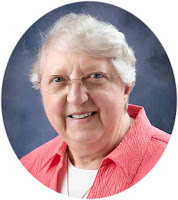As I write this on Tuesday morning,
we as a nation just celebrated Memorial Day weekend. Here at the monastery, we
also buried the remains of Srs. Charles, Rita, and Margaret Mary in our
cemetery. While they did not die serving in the Armed Forces, it seemed an
appropriate weekend. 
The Civil War, which ended in the spring of 1865, claimed more lives
than any conflict in U.S. history and required the establishment of the
country’s first national cemeteries. By the late 1860s, Americans in various
towns and cities had begun holding springtime tributes to these countless
fallen soldiers, decorating their graves with flowers and reciting prayers. It is unclear where exactly this
tradition originated; numerous different communities may have independently
initiated the memorial gatherings. On May 5, 1868, General John A. Logan,
leader of an organization for Northern Civil War veterans, called for a
nationwide day of remembrance later that month. “The 30th of May, 1868, is
designated for the purpose of strewing with flowers, or otherwise decorating
the graves of comrades who died in defense of their country during the late
rebellion, and whose bodies now lie in almost every city, village and hamlet
churchyard in the land,” he proclaimed. The date of Decoration Day, as he called it, was chosen because it
wasn’t the anniversary of any particular battle.
Memorial Day, as Decoration Day gradually
came to be known, originally honored only those lost while fighting in the Civil War. But
during World War I the United States found itself embroiled in another major
conflict, and the holiday evolved to commemorate American military personnel
who died in all wars, including World War II, The Vietnam War, The
Korean War and
the wars in Iraq and Afghanistan (https://www.history.com/topics/holidays/memorial-day-history).
This weekend I honored and prayed for those who have gone
before us, our Sisters, but also those who gave their lives in defense of
freedom. I also remember that with that freedom comes great responsibility. St.
Benedict tells us in the prologue to his Rule, “If you desire true and eternal
life, let peace be your quest and aim.” We now carry the torch. As we hold it
high, may it light the way to peace.
“In Flanders Fields” by John
McCrae
In
Flanders fields the poppies blow
Between
the crosses, row on row,
That
mark our place; and in the sky
The
larks, still bravely singing, fly
Scarce
heard amid the guns below.
We
are the Dead. Short days ago
We
lived, felt dawn, saw sunset glow,
Loved
and were loved, and now we lie
In
Flanders fields.
Take
up our quarrel with the foe:
To
you from failing hands we throw
The
torch; be yours to hold it high.
If
ye break faith with us who die
We
shall not sleep, though poppies grow
In
Flanders fields.
Sr. Eileen O'Connell
 As I write this on December 21, we are officially 9 minutes away from the winter solstice occurring at 10:58 a.m. EST. The shortest day and the longest night. On Wednesday, December 22, the people will–as they have for thousands of years–be celebrating the solstice at Stonehenge in Wiltshire, England. This monument was constructed around 4500 years ago, likely by farmers and herders. Ancient cultures built such structures to align with the sun at specific times, some performing sacred rituals at sunset each day to ensure its return the next day.
As I write this on December 21, we are officially 9 minutes away from the winter solstice occurring at 10:58 a.m. EST. The shortest day and the longest night. On Wednesday, December 22, the people will–as they have for thousands of years–be celebrating the solstice at Stonehenge in Wiltshire, England. This monument was constructed around 4500 years ago, likely by farmers and herders. Ancient cultures built such structures to align with the sun at specific times, some performing sacred rituals at sunset each day to ensure its return the next day.






















